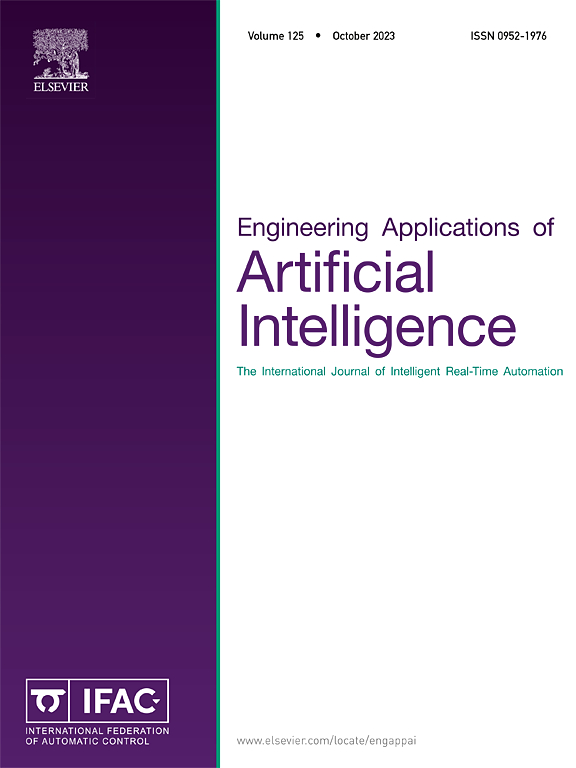Low-light image enhancement using dual cross attention
IF 8
2区 计算机科学
Q1 AUTOMATION & CONTROL SYSTEMS
Engineering Applications of Artificial Intelligence
Pub Date : 2025-07-02
DOI:10.1016/j.engappai.2025.111501
引用次数: 0
Abstract
Low-light image enhancement (LLIE) aims to improve the perceptibility and interpretability of images captured in poorly illuminated environments. Existing LLIE methods often fail to capture the local self-similarity and long-range dependencies at the same time, causing the loss of complementary information between multiple modules or network layers, ultimately resulting in the loss of image details. To alleviate this issue, we design a hierarchical mutual Enhancement via a dual cross-attention transformer (ECAFormer), which introduces an architecture that enables concurrent propagation and interaction of multiple disentangling features. To capture the local self-similarity, we design a Dual Multi-head Self-Attention (DMSA), which leverages the disentangled visual and semantic features across different scales, allowing them to guide and complement each other. Further, a cross-scale DMSA block is incorporated to capture residual connections, thereby integrating cross-layer information and capturing the long-range dependencies. Experimental results show that the ECAFormer reaches competitive performance across multiple benchmarks, yielding nearly a 3.7% improvement in Peak Signal-to-Noise Ratio (PSNR) over the suboptimal method, demonstrating the effectiveness of information interaction in LLIE. For facilitating the efforts to replicate our results, our implementation is available on GitHub1

利用双交叉注意增强弱光图像
弱光图像增强(LLIE)旨在提高在弱光环境中捕获的图像的可感知性和可解释性。现有的LLIE方法往往不能同时捕获局部自相似和远程依赖,导致多个模块或网络层之间的互补信息丢失,最终导致图像细节的丢失。为了缓解这一问题,我们通过双交叉注意转换器(ECAFormer)设计了一种分层相互增强,它引入了一种架构,可以实现多个解纠缠特征的并发传播和交互。为了捕获局部自相似,我们设计了一个双多头自注意(DMSA),它利用了不同尺度上分离的视觉和语义特征,使它们相互引导和补充。此外,采用跨尺度DMSA块捕获残留连接,从而集成跨层信息并捕获远程依赖关系。实验结果表明,ECAFormer在多个基准测试中达到了具有竞争力的性能,与次优方法相比,峰值信噪比(PSNR)提高了近3.7%,证明了LLIE中信息交互的有效性。为了方便复制我们的结果,我们的实现可以在GitHub1上获得
本文章由计算机程序翻译,如有差异,请以英文原文为准。
求助全文
约1分钟内获得全文
求助全文
来源期刊

Engineering Applications of Artificial Intelligence
工程技术-工程:电子与电气
CiteScore
9.60
自引率
10.00%
发文量
505
审稿时长
68 days
期刊介绍:
Artificial Intelligence (AI) is pivotal in driving the fourth industrial revolution, witnessing remarkable advancements across various machine learning methodologies. AI techniques have become indispensable tools for practicing engineers, enabling them to tackle previously insurmountable challenges. Engineering Applications of Artificial Intelligence serves as a global platform for the swift dissemination of research elucidating the practical application of AI methods across all engineering disciplines. Submitted papers are expected to present novel aspects of AI utilized in real-world engineering applications, validated using publicly available datasets to ensure the replicability of research outcomes. Join us in exploring the transformative potential of AI in engineering.
 求助内容:
求助内容: 应助结果提醒方式:
应助结果提醒方式:


